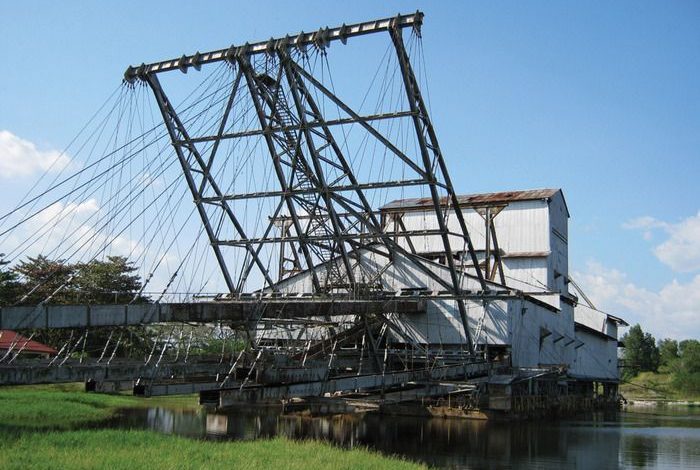Saving the Last Tin Dredge


News that the Menteri Besar Incorporated (MB Inc) is set to give a new lease of life to the last tin dredge located at the 5th Mile Batu Gajah, Tanjung Tualang Road, has lifted my spirits of seeing more tourism projects develop in Perak.
The news had also proved that I was wrong to think that the authorities and people in the Silver ‘City That Tin Built’, were not interested in promoting their state with a theme based on tin mining.
The MB Inc’s effort is the third attempt. The first by the Batu Gajah District Council and the second by mining company Osborne & Chappel Sdn Bhd, had all failed due to the high cost of maintenance.
I pray and hope that this latest attempt can come up with a sustainable plan to preserve the dredge.
Saving the last tin dredge has always been in my mind. In fact, I was planning to work on another article to regenerate the interest on the preservation of the dredge, when I read the news in a national daily (30.3.15) of the plan.
According to the MB Inc’s chief executive officer Datuk Aminudin Hashim, the initiative, under the ‘Save the Dredge 2.0’ campaign, is scheduled for completion by 2018.
MB Inc took over the campaign three months ago. The campaign, which started in 2010, was abandoned by Osborne and Chappel in May, last year.
“Perak was built on tin and we do not want the people to forget that. This part of history needs to be preserved,” said Aminuddin.
My interest in the tin dredge began way back in 1997, when I heard that the last of the two remaining tin dredges in Tanjung Tualang were to be stripped off and sold as scrap iron. One had already been dismantled, while the other named Tanjung Tualang 5 (TT5) was to be next.
I immediately made an appeal through my weekly column “Ipoh Outlook” in the New Straits Times for the preservation of the dredge. I suggested that the tin dredge be preserved as the centerpiece and replicas of the various methods of tin mining such as gravel pump mines and palongs be built around it to enhance the area as a showpiece and a living monument of the tin mining industry. The site could be known as ‘Kinta Tin Mining Village’ or by any other name associated with mining.
I had expressed the hope that the dredge be anchored on a solid base with a moat around it so that it would appear to be floating. Otherwise its pontoons could eventually leak and cause the dredge to tilt or collapse.
To attract visitors even at night, the dredge could be decorated with coloured lights and one of the well-known Udang Galah (fresh-water lobsters) restaurants from Tanjung Tualang could be encouraged to set up at the dredge. It would be like the Chinese Junk restaurant in Hong Kong Harbour.
Some of my suggestions were subsequently well received by the state government and those in the tourism industry. The then Menteri Besar, Tan Sri Ramli Ngah Talib, later directed the Batu Gajah District Council to undertake the task to save the dredge donated by the Malaysian Mining Corporation as ‘Warisan Kapal Korek’.
The 4500-tonne giant machine was designed and built by F.W. Payne in 1938 in England and was one of the main workhorses of the tin mining industry in Malaysia. It was in operation for 44 years until August 1982.
And again in this column (Issue IE93), I suggested “Perhaps even hire guides dressed as dulang washers to show tourists around.”
“Something catchy to draw tourists as well as reflect how important the tin mining industry had been to Perak where not only Ipoh was built on tin, also other towns such as Gopeng, Kampar, Chemor, Tanjung Tualang and Papan.”
“As I see it, this unique tourism project can be a success if properly planned and managed. It could gradually generate economic activities around it, where the villagers once depended on the mining industry.”
“Most tourist spots can turn out to be disappointing, but here, we can display a heritage that had meant a lot to the economic development of the country, as well as an opportunity to marvel at a giant mining contraption.”
The question now is, can the MB Inc continue to preserve the tin dredge, when others have failed? If so, for how long?
I believe the best way to do it is to form a non-profit-making mining industry heritage foundation and get the people to be involved in planning and fundraising to preserve the tin dredge. The federal and state government must also get involved by providing annual grants.
This, I believe, is the only way the tin dredge can survive.


